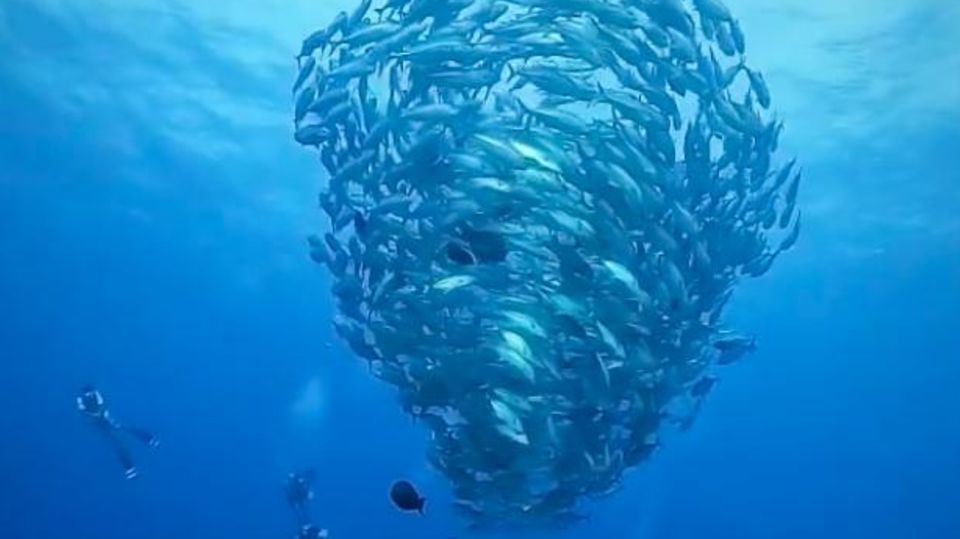Poland
Dead fish discovered in canals near the Oder – concern about a new environmental disaster is growing
A dead lead lies in the shallow water of the German-Polish border river Oder in the summer of 2022
© Patrick Pleul / DPA
Dead fish have been discovered in canals near the Oder. In Poland and Germany, this brings back bad memories of the environmental disaster last summer.
The discovery of dead fish in the water system of the Oder in Poland has also triggered alarm in Germany. In August a year ago, an environmental disaster occurred in the German-Polish border river, killing several hundred tons of fish. Now Poland called a crisis team because dead fish were discovered in canals days ago. So far, the Oder itself has probably not been affected.
“Federal Environment Minister Steffi Lemke is alarmed by news about the situation on the Oder in Poland,” said a spokeswoman for the DPA ministry. “The fish kills are still a long way from the German-Polish border, but there are concerns about a scenario similar to last summer.” Poland is asked to reduce discharges into the Oder.
“We are extremely concerned”
The head of the Lower Oder Valley National Park in northeastern Brandenburg, Dirk Treichel, said after the finds in the canals on the Polish side: “We are extremely concerned.” So far, however, no dead fish have been found in the national park area.
According to the Ministry of the Environment in Warsaw, the crisis team deployed in Poland should enable rapid action. The aim should be to stop the development of the toxic golden alga Prymnesium parvum. Experts assume that high salinity, low water, high temperatures and poison from this type of algae were the main reasons for the fish die-off last summer.
Dead fish as a warning signal
“Three dead fish – this is already an important warning sign that we have to be on standby and the risk of a repeat of last year’s situation is very high,” Poland’s Environment Minister Anna Moskwa told Polish public radio on Wednesday. The water temperature of the Oder has risen sharply. “That’s the first factor.”
Lake Victoria
Why the fate of millions of Africans depends on a fish that we eat here
At the beginning of the week, according to the regional administration of the Opole Voivodeship, a total of 450 kilograms of dead fish were recovered in the Gliwice Canal branching off the Oder and in the Kedzierzyn Canal. The poisonous golden alga was also detected in water samples in both channels. The golden alga had already appeared in two reservoirs near the Oder in May and April.
Backwaters of the Oder are to be sealed off
As announced by the Ministry of the Environment, the crisis management team recommends temporarily sealing off the backwaters of the Oder and building natural barriers in retention basins to stop the development of golden algae. The discharges of industrial and domestic waste water depending on the water measurement values are to be controlled systematically. In addition, an enrichment of the water with oxygen is recommended.
The Gleiwitz Canal, inaugurated in 1939, is 41 kilometers long and connects the Upper Silesian city of Gleiwitz (Gliwice) with the Oder. The 4.5 km long Kedzierzyn Canal branches off from the Gliwice Canal and leads to the nitrogen works in Kedzierzyn-Kozle.
Salinity high, water level low
The head of the Lower Oder Valley (Uckermark) National Park, Treichel, said it was good that Poland was taking action and making the finds of fish carcasses public. At the same time, however, he is concerned that the salt content is currently higher than it has been for a long time. “There has been no improvement,” said Treichel. The Oder also has low water, the temperature is around 23 degrees.

In August 2022, masses of dead fish had to be collected in the Lower Oder Valley National Park. Commercial fishermen were compensated for the losses.
Measurements of the Oder published
Recently published measurements in the Oder near Hohenwutzen showed an electrical conductivity of almost 1600 microsiemens per centimetre. A value of more than 1900 was determined at the measuring station in Frankfurt an der Oder. The electrical conductivity in the water is an indicator of the salt content.
At the time of the environmental catastrophe in the Oder, the value had risen from 800 to more than 2000 microsiemens per centimeter (µS/cm), as reported by the Leibniz Institute for Freshwater Ecology and Inland Fisheries. It was said that such high values could only be caused in a river by industrial salt discharges. Federal Environment Minister Lemke said in April that she suspected that the Polish mining industry was responsible for the salt discharges.

